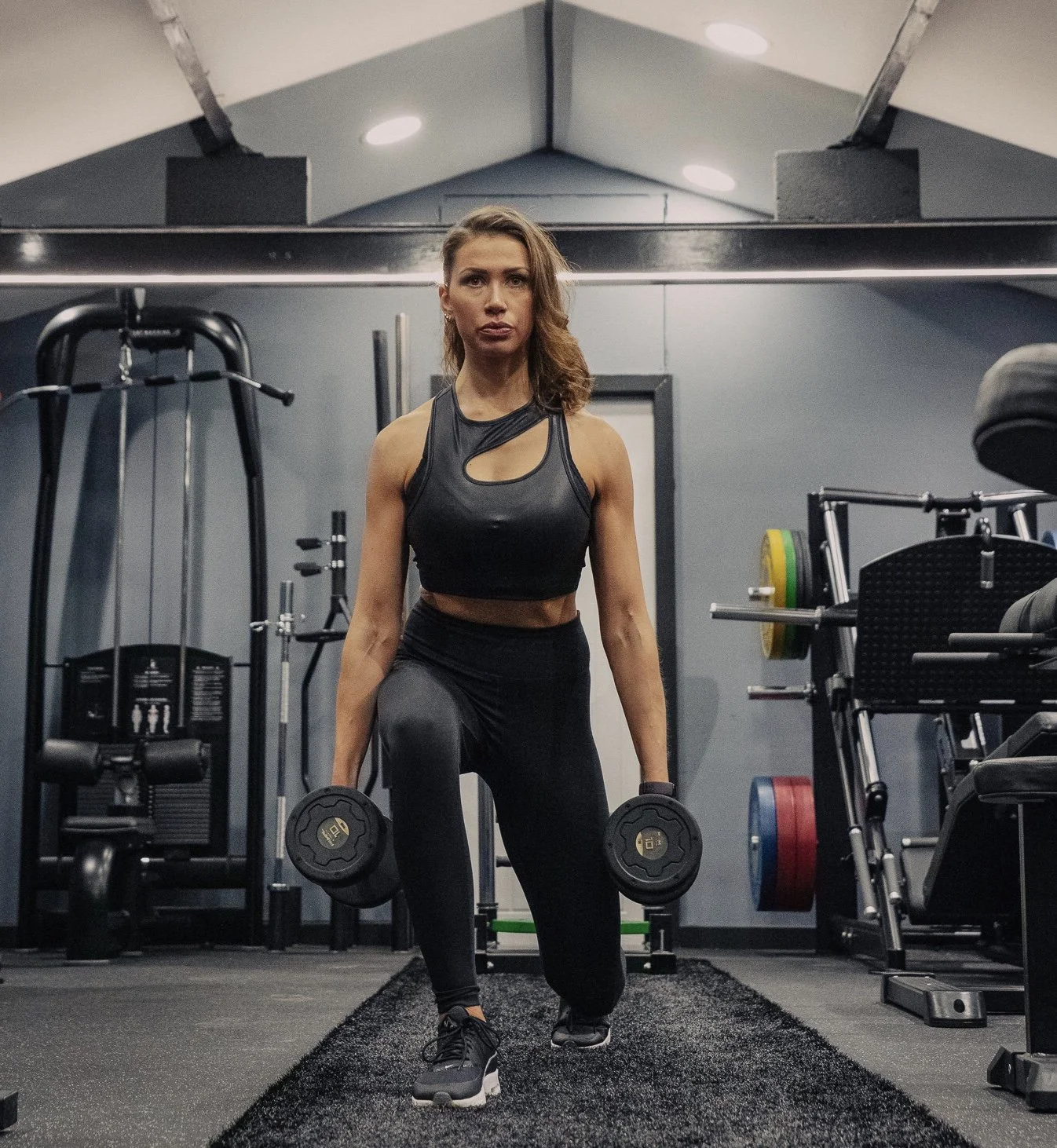Adaptations for the perimenopause
The perimenopause is typically thought to occur in a woman’s 50’s but it can happen in their 40’s and even 30’s. Perimenopause can last anywhere from 12 months up to 4 years.
Once a woman has no longer had a menstrual cycle for 12 months she is considered to be menopausal.
The drop in estrogen accelerates bone loss, increasing a woman’s risk of developing osteopenia and later osteoporosis.
The lack of estrogen also increases a loss of muscle mass and muscle strength, this loss is known as sarcopenia.
With the loss of muscle mass a woman’s metabolic rate can begin to slow down. Fat gain may start to occur with a shift in body fat from the lower body to around the midsection and this is typically accompanied by the development of insulin resistance.
Act now before you reach menopause
The most body composition and metabolic changes occur in the peri menopause.
We want to support our bones, prevent muscle loss and support our metabolic health. You certainly can reduce the midsection fat gain and reduce any other negative effects associated with the menopause but you will need to make some training adaptations.
We can help to reduce the loss of lean mass and unfavourable metabolic changes by changing the way we exercise.
We don’t need to focus so much on moderate intensity endurance type training. Womens bodies are already well adapted to that. This is mostly due to the sex differences in our muscle fibre composition.
With age we start losing the speed and power so this is where we really should focus our energy to.
We need to do more exercise which causes a stress on our bodies. Teach the female body it still needs to store carbohydrates as glycogen in the muscle and liver for fuel. In turn you will have a greater insulin sensitivity therefore you’ll be able to get away with more carbohydrates in your diet.
Correct weight training and HIITT is critical in the menopausal transition to reduce the negative body composition and health changes that can happen in the years leading up to menopause.
Weight training
Progressive resistance training can produce substantial increases in strength and muscle size.
Proper nutrition and nutrient intake is needed alongside to maximise this effect.
Women generally have a lower proportion of type II (fast power-producing) muscle fibers than men (though we typically have a greater proportion of type I endurance fibers). So hitting the weights to build and maintain as much strength, power, and force is important, especially with age.
We start losing muscle around the age of 40 (maybe even earlier). That loss, especially of the type ll fibres becomes more advanced in the menopause transition. Without intervention, you can lose up to nearly 50% of your lean mass by the time that you’re 80!
If that isn’t enough to get you geared towards the weight room then how about this:
Heavy lifting is also good for improving your metabolism, supporting your bones and looking after your cardiovascular health. Win Win!
Plyometric training
As I’ve said previously when women age we lose that increased power output. With plyometric training this can help improve power, the integrity of muscle, it’s response and reaction time.
Jump reactive training I.e. plyometrics. This type of training gives your bones and muscles the extra stimulus that comes when you push off against gravity and land back down. This generates important physiological changes.
One being it helps improve your bone health and as you know this reduces with age. It also improves your mitochondria function (think of these as little powerhouses in your body)and insulin sensitivity, both of which are important for menopausal women.
You don’t need to go attempting box jumps right away. Start with simple squat jumps to get things going.
Sprint Interval Training
We can use the high intensity exercise to teach the body not to increase visceral fat in the stomach.
If you want to look after the appearance of your top end then interval training is calling your name!
This is especially true for the menopausal transition. The best type of high-intensity interval training for menopausal women is super short, sharp sprint-style intervals lasting about 30 seconds or less.
When you extend intervals past 60 seconds, you can get greater increases in the stress hormone cortisol. Cortisol is good for a surge of energy, but you don’t want those stress-hormone levels to stay elevated longer than necessary to get the job done, (can lead to belly fat) especially in menopause when cortisol can already be elevated.
So introducing sprint intervals, you still get the benefits without the excess rise in cortisol.
Improved insulin sensitivity, stronger mitochondria, improved fat burning (especially deep visceral fat), and an even a boost of growth hormone after you finish!
Tabatas are a simple way to add intensity to any exercise:
Push as hard as possible for 20 seconds. Recover for 10 seconds. Repeat 6 to 8 times. Rest 5 minutes, and work up to repeating 2 to 3 more rounds.
All weight training, plyometrics and intervals will all lead to improved insulin sensitivity, improved fat burning (especially visceral fat) and give you a boost of growth hormone.
So if you want to have the biggest impact on your metabolism and body composition as you reach menopause and beyond, starting early in your transition may be the most effective strategy!

